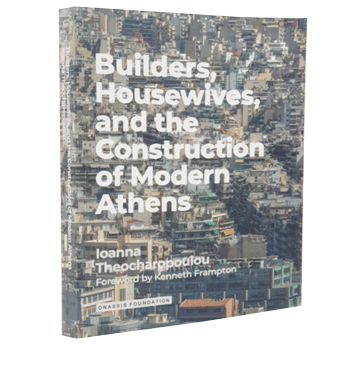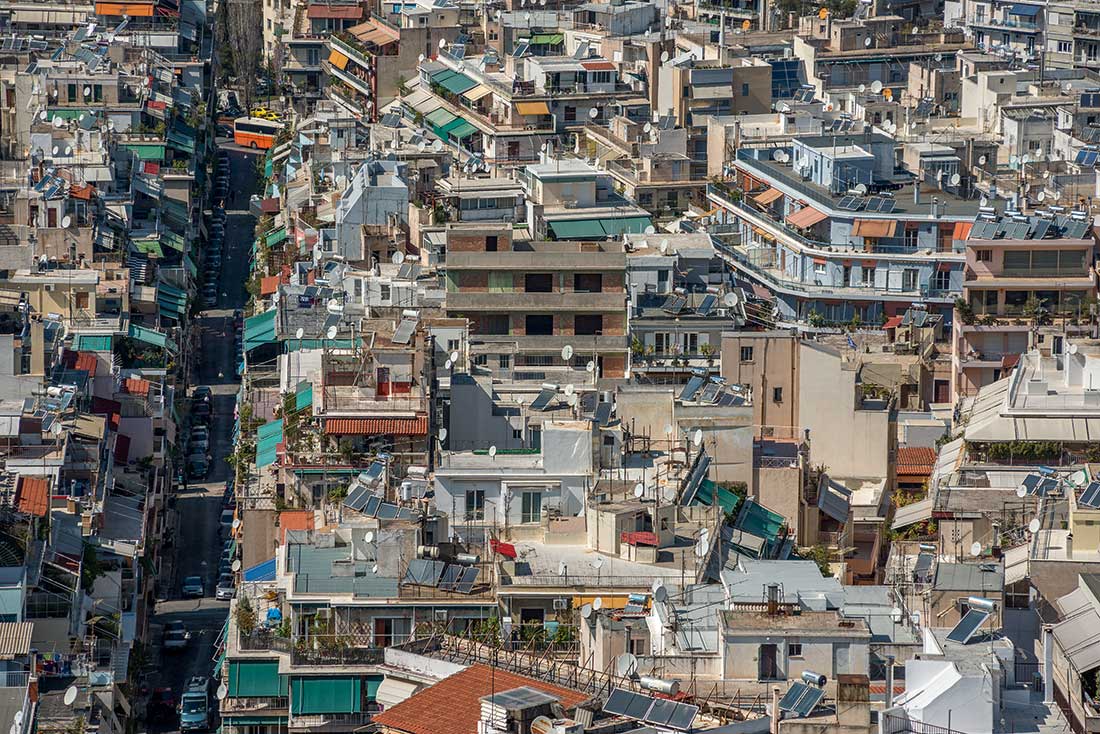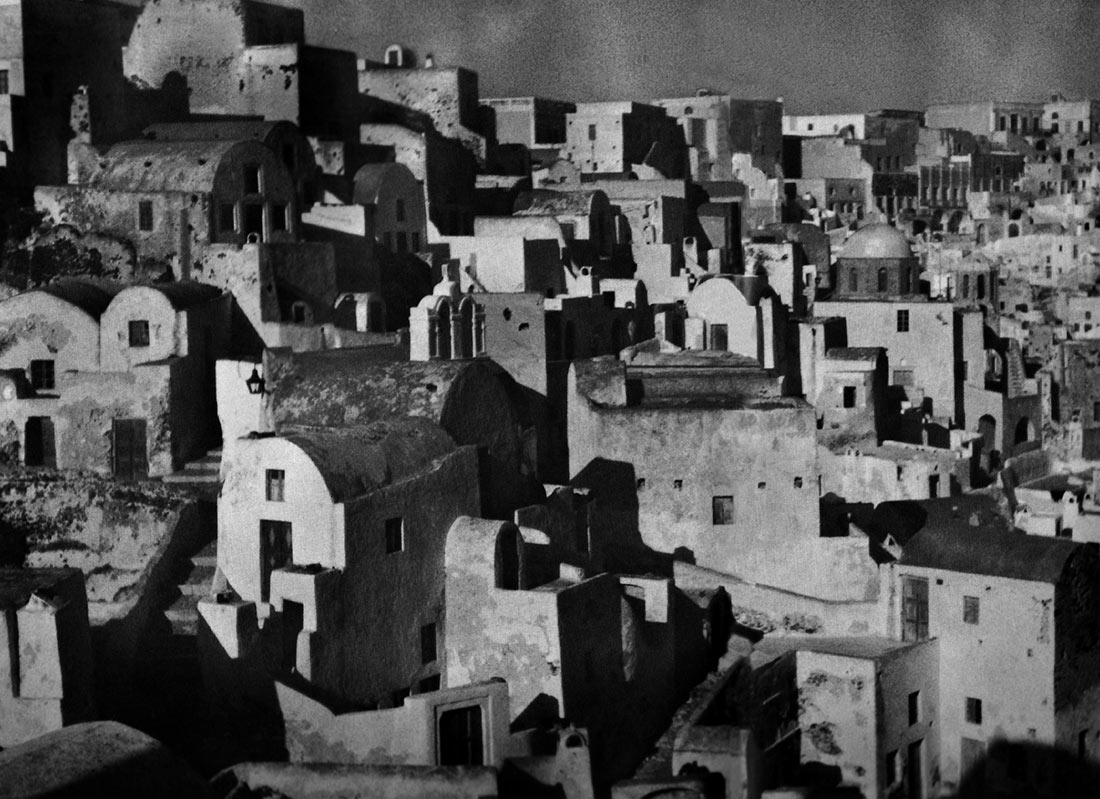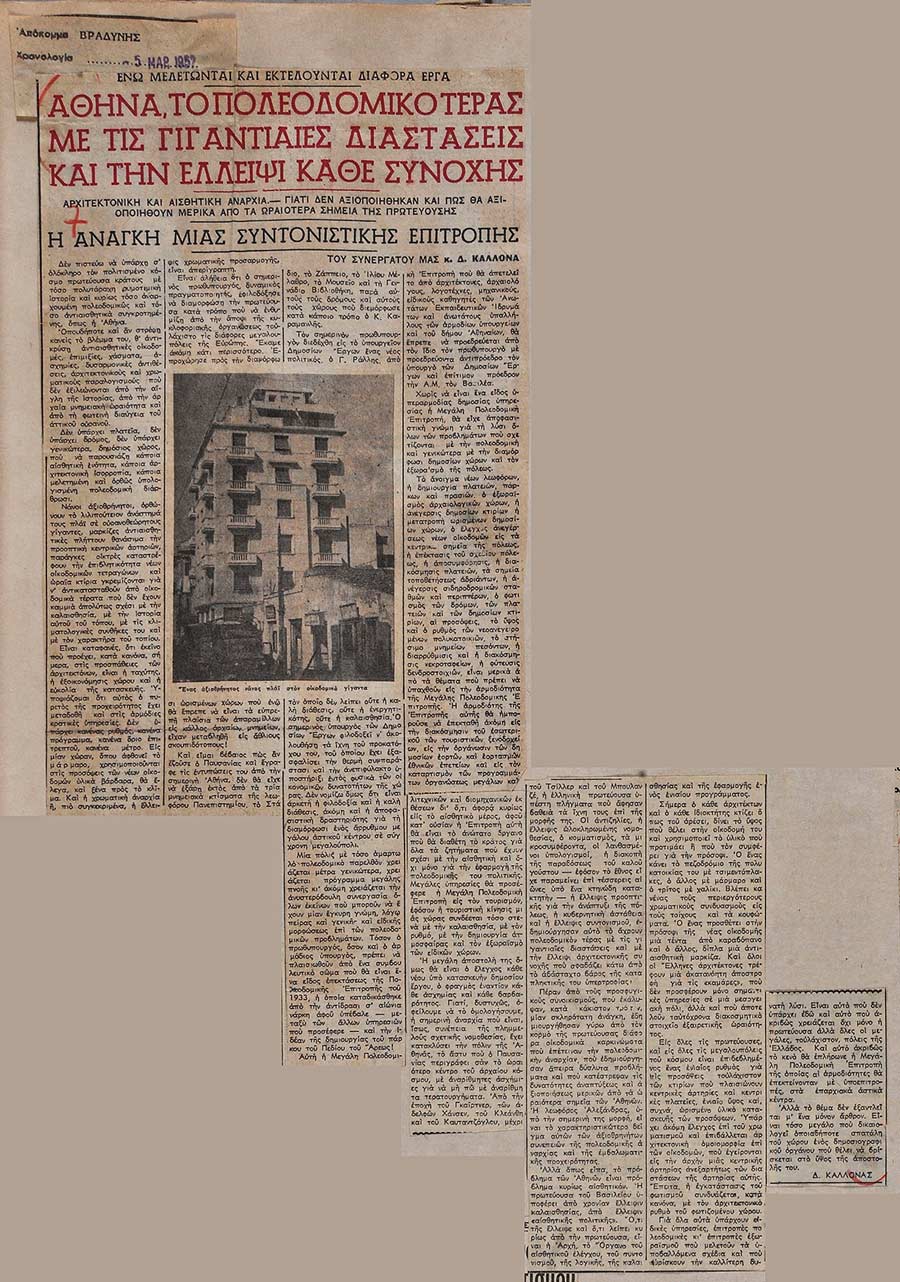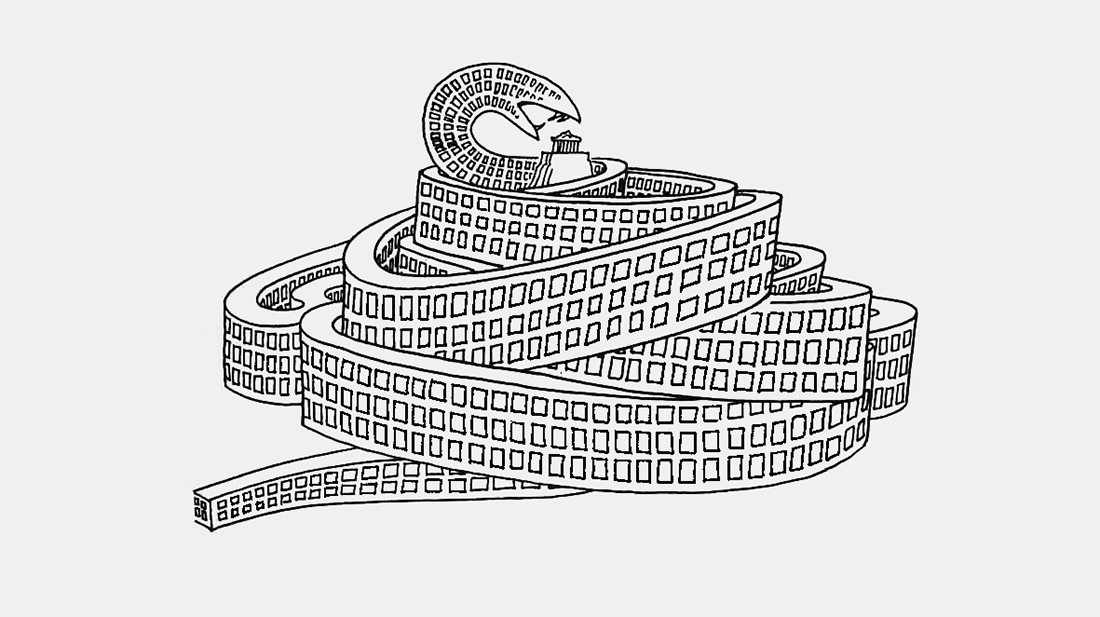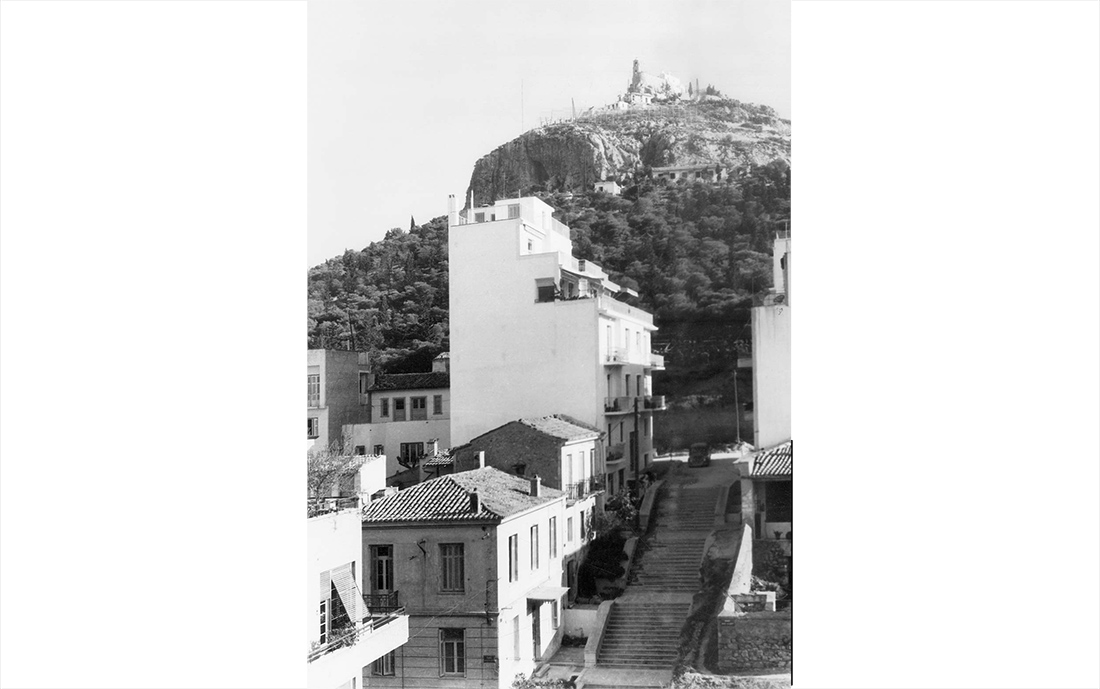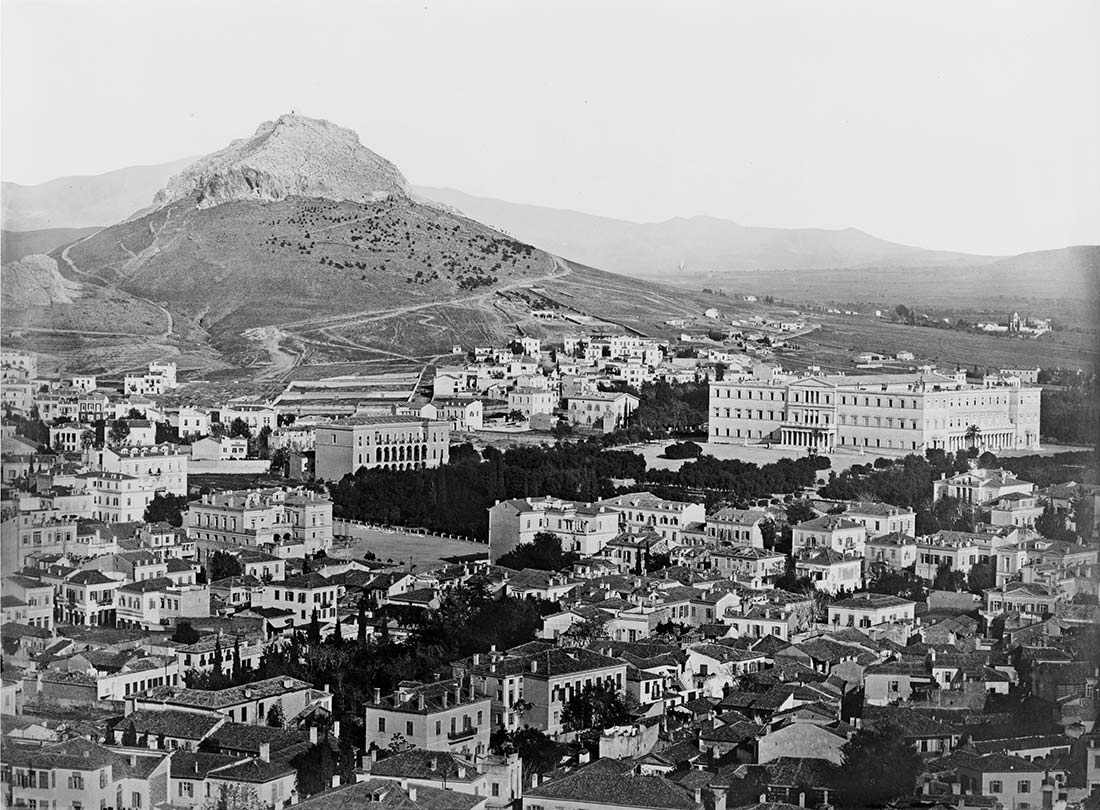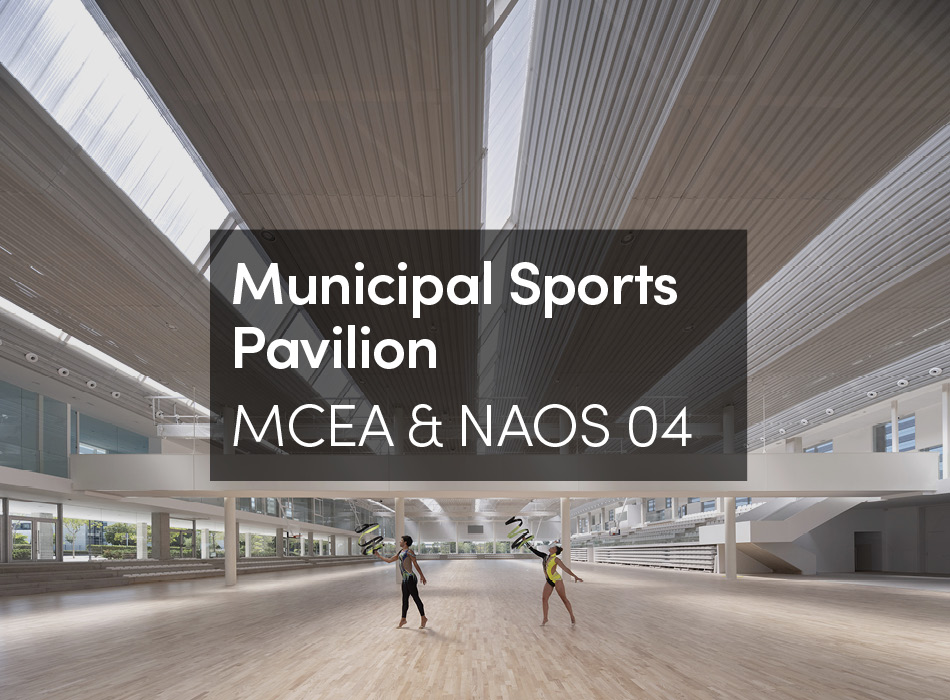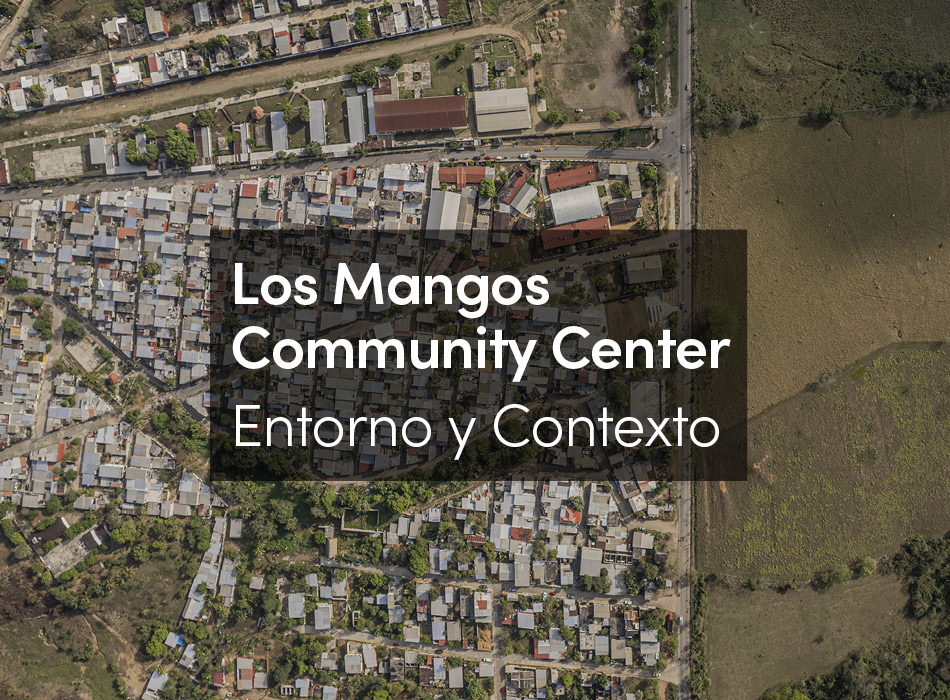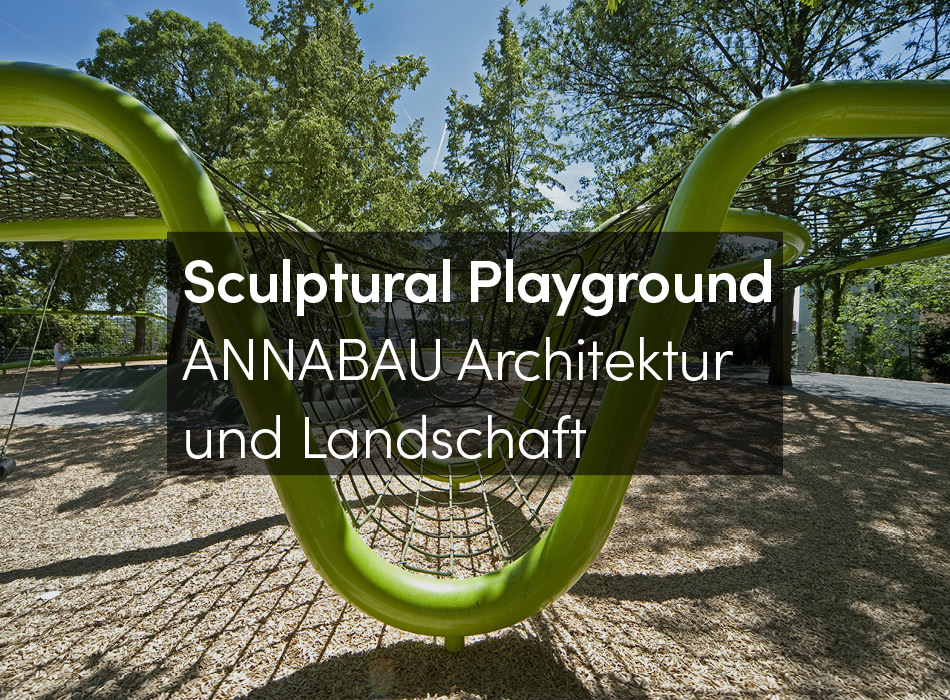To this day almost all descriptions of Athens have at their core a contrast between the grandeur of the Acropolis and the banality of the post-Second World War city. As we see in the image opposite, Athens today consists of a vast, mostly unplanned, nondescript (and polluted) expanse that stands in stark contrast to the cultural magnificence of its famous classical monuments (Fig. 0.1). This book presents a different reading of the city, suggesting that, even if far from perfect, there is something rich and positive to discover in modern Athens that may also help us to understand and analyze other rapidly growing cities around the world.
Fig 0.1
Cities are never tidy. A vast majority of them, particularly in newly industrializing countries, are designed without architects or other urban professionals. Like some of these global cities today, Athens grew as a patchwork of improvisations and adaptations—ad hoc, individualistic and pragmatic. This does not make it—or other such global cities—uninteresting. In fact, architectural and urban historians have long held up the paradigmatic European cities—London, Paris, Rome, Milan, Berlin—as examples of city-making.
Athens fits none of these models. Athens’ urban space did not grow in similar ways to that of other European cities. For a start, Greece suffered occupation for almost 400 years, primarily under the Ottoman Turks (1453–1821). As a province of the Ottoman Empire, Athens was a relatively important settlement of about 10,000 people up until the Greek War of Independence. At that point however, following fierce fighting, especially with the siege of the Acropolis by the forces of the Turkish officer Kütahı just before the end of the war (1826–27), the city was destroyed, suffering great damage to its people and monuments.
Fig 0.2
Not having developed along historical paths familiar in European cities, Athens has often been identified as missing something important in terms of its larger European architectural ‘family.’ But what if we try to understand it in its own terms? And how can we do that? In this book I have tried to develop a methodology to identify and explore in depth the city’s other, perhaps less familiar, histories: a set of processes specific to this context. I use these as explanatory-critical ‘sites,’ or as my lenses for interpretation. The processes I look at are social (internal migration), financial (the ‘part-exchange’ system, antiparochē), and administrative (building codes and amendments). In themselves they are not newly explored here. But they are read and synthesized in new ways, proposing that this nondescript expanse is bound up with issues of identity and modernization, and the particular forms these took in modern Greece.
The book offers conceptual tools with which to make sense of the particularities of Athenian development, based upon an analysis of political and cultural events and discourses about them, as well as an exploration of a set of behaviors, traditions, and attitudes towards architecture and building rooted in Greek history and social life. The development of postwar Athens in particular, this book suggests, was a direct consequence of a set of behaviors embedded and pervasive in Greek cultural life that might be called ‘informal’ in contrast to the more organized, ‘rational,’ northwestern European approaches to architecture and urban development.
Paradoxically, one of the most stable characteristics of Greek cultural and political life from the nineteenth to the late twentieth centuries, if not up to the present, has been a strangely conflicted behavior towards urbanism shared by those in power, as well as by intellectuals and ordinary citizens. Far from being casual or ‘randomly’ produced (this is a term used by critics and historians) the erratic and inconsistent attitude towards planning, and the lack thereof, obsesses Greeks (as any casual look in daily newspapers will attest).[1] The sense of ambivalence and tension has parallels with other cultural expressions such as language, which formed the background to the intellectual debates about building (with the question of the appropriate language for architecture and urbanism added to this mix).
Fig 0.3
The conflicted attitude towards urban space came about in large part as a consequence of historical events. Since the nineteenth century and the founding of the Greek State in 1830, there has been a great deal of conflict and uncertainty over who is ‘Greek’ (the autóchthōn or heteróchthōn Greeks?) as well as what is ‘Greek’—in architecture, language, music, and the arts. This tension became particularly problematic during times when Greek identity was still in formation: in the period following Independence when new city plans were produced almost every year, but none were fully implemented; in the 1920s following the failed war with Turkey; and at the end of the Axis occupation (1945), and during the Greek Civil War (1946–49).
The negative gaze and attitude of disapproving comparisons between the modern city, its irregular, unregulated, informal ways, and its universally admired ancient past has a long lineage. It began in the late eighteenth century with the very first English and French scholars who braved the dangers of the still-occupied Greek territories in order to catch a glimpse of the ancient temples. Later on, the European philhellenes of the nineteenth century shared their predecessors’ passion for uncovering ruins.[2] Those Europeans engaged in a complex identification of themselves vis-à-vis these ruins: that is, to some extent they discovered their own modernity as they searched for Greece’s ancient past (Fig. 0.4).
Fig 0.4
In the twentieth century, many extraordinary foreign architects visited Athens. Amongst the most well documented was the 1933 CIAM IV meeting that took place aboard the SS Patris II traveling from Marseilles to Athens, carrying some of the most important figures of the modern movement in architecture (Le Corbusier, Josep Lluís Sert, Cornelis van Eesteren, and Giuseppe Terragni), the historian Sigfried Giedion, the artists László Moholy-Nagy, Fernand Léger, and many others. This time again, the Europeans admired the temples. They did not talk of their impressions of the modern city, but they did take time to visit and admire examples of local modern architecture, particularly the school building program then in progress.
In addition, during this visit the CIAM members discovered and marveled at the indigenous architecture of the Aegean islands. Thus began an appreciation of Aegean architecture that influenced both Greek and international architects and became another point of negative comparison with the modern city. In the 1960s another cosmopolitan traveler, Bernard Rudofsky, who had conducted his doctoral research on the architecture of the Greek islands of the southern Cyclades in 1931,[3] revisited the Aegean and featured his black-and-white photographs in the widely known MoMA exhibition in New York, ‘Architecture Without Architects’ in 1964 (Fig. 0.2). In the exhibition catalog, which later become a best-selling stand-alone book, Rudofsky praised Aegean domestic architecture with its thick walls and vaulted ceilings for its appropriateness to the local environment. Furthermore, he argued that it should be an example for contemporary architects. His admiration for Aegean architecture, a kind of pre-industrial spontaneous, or self-built landscape, prompted a new reappraisal of such buildings amongst American and European architects. Yet Rudofsky, too, neglected to see Athens and its spontaneous informal building culture in similar terms. His studies focused on ‘vernacular’ architectures of isolated rural areas. This book re-examines the assumption that vernacular architecture can only be found in non-urban spaces and tries to problematize the term ‘vernacular’ vis-à-vis the Greek context.[4]
At least since the 1950s, Greek critics and historians have either completely ignored the informal aspects of the city or assessed twentieth-century Athenian urbanism in the most negative terms: The city itself was charged with being a ‘concrete jungle,’ ‘chaotic,’ or even becoming an ‘urban monster’ entering into a state of ‘architectural and aesthetic anarchy’ (Fig. 0.3). As one newspaper headline expressively announced in relation to the development of postwar Athens: “The Misfortune of Athens: Total Architectural Irresponsibility, Botched, Improvised Design. The Rule of Administrators, Committees, and the Example of Kolokotroni Square. The Neglect of Important Sites.”[5]
Yet it is still not immediately obvious how to go about exploring informal urbanism as an architectural historian, in any context, except to keep an open mind. It is a simplification to think that because there is no ‘planning’ or organization in the expected European sense, there must be ‘chaos’—as if one condition precludes the other. What if there is something else? What other conditions, processes, histories give each such city its unique shape?
In Athens, post-Second World War development took the form of relatively small-scale multistory apartment blocks generically called polykatoikía. The term polykatoikía is derived from poly (multiple) and oikia (dwelling). This would prove to be the most ubiquitous building type of the postwar period. The criticism of the time often described polykatoikía apartments as “sad,” “terrible,” “low-ceiling boxes that make one feel as if one was living in a drawer.” Indeed, the image of the polykatoikía literally devouring the city’s classical glory, including the Parthenon itself as we see in the selected cartoons (Fig. 0.5), is a telling expression of the strong emotions people harbor towards the polykatoikía.[6]
Fig 0.5
The rapid construction of polykatoikía housing served the pressing need of shelter for the vast numbers of people who moved into the cities and particularly Athens after the end of the Second World War and the Greek Civil War. Mostly constructed by private initiative rather than organized State effort, and without financing from banks or other lending institutions, the successful production of the polykatoikía might at first seem unlikely especially when compared with other European cities. The accelerated construction of the polykatoikía took place alongside a large-scale destruction of the prewar city. Images of developers’ bulldozers devouring nineteenth-century neoclassical buildings from the early part of the twentieth century, and the continual noise of digging and dust and tearing things down were a striking part of life in Athens even up to the mid-1970s. At times, especially during the rushed construction of the early postwar period, it was rumored that when developers came upon ancient remains by digging for foundations for polykatoikía buildings, they would literally pour concrete over the top as quickly as possible before archaeologists could get the chance to see the remains and thus slow down or even stall the new construction indefinitely.[7]
The phenomenon of demolition is related to modernization processes and is a common feature in all cities everywhere. In Greece, the onset of architectural modernization, which began with Independence from the Ottoman Empire and the founding of the Greek State in the first part of the nineteenth century, was vastly different from that experienced in other countries—particularly northern European countries. In most accounts, up to the 1830s Athens appeared like a village rather than a city, composed of stone and timber houses with high walls for privacy and protection from the Ottoman rulers. There were hardly any public, civic, or religious buildings since even though there was a degree of religious freedom, public life was severely restricted. Greek Christians were not considered equal to Muslims and as Richard Clogg has noted, were “subject to a number of disabilities which emphasized their inferior status.”[8] Following the demise of the Ottoman rule, Athenians tore down existing domestic buildings that had been damaged during the war and began constructing neoclassical houses, introduced to Greece by the first King, the Bavarian Prince Otto of Wittelsbach, second son of Ludwig I.
Widely perceived as symbolizing the country’s own classical past, neoclassicism was quickly adopted and became the most commonly used architectural expression both for domestic and public architecture. At the same time, Otto’s advisors and archaeologists began a process of ‘cleansing’ in Athens. Classical temples and monuments were restored, and new ones patiently excavated, whereas memories of the Ottoman occupation were hastily buried, along with many other structures, including several of Byzantine and medieval heritage.
Fig 0.6
The processes of destruction and rebuilding to a large extent managed to erase the evidence of different layers of time in Athenian history, thus increasing the sense of a chasm between the ‘civilization’ of the classical city and the ‘anarchy’ of the modern one. Since there are very few remaining buildings from the centuries between the classical times and the twentieth century—except for a few remaining Byzantine churches—the sense of disparity between the apparent perfection of the classical city and the evident problems of the modern one, is even greater. Even now, when travelers choose to see contemporary Athens, they invariably disparage what they find by holding up an idealized image of the ancients to the impoverished present. As one writer declared in a book written just before the Athens Olympics in 2004:
From the Acropolis, it looks as if a giant—in a moment of boredom, or perhaps disgust—threw his toy houses in the air. Where they landed, modern Athens was formed. Now the toys, in revenge for their neglect, seem to be multiplying, filling every nook of the Athenian basin and slowly climbing the mountains to the north, east, and west. […] Only what’s left standing of the Parthenon and the Aegean to the south have escaped the giant’s sloppy hand. I turn to the ancient temple, honey-colored in the dull sun, and back to the glistening sea to the south, seeking something to counter the architectural frenzy below.[9]
Echoing the established opposition between the ancient heritage (the Parthenon), indigenous building (the Aegean), and modern Athens, George Sarrinikolaou, an American journalist of Greek origin, reiterated the very same negative characterizations as countless other travelers before him. As he suggested, above all, Athens is indeed characterized by the widespread construction of polykatoikía multifamily dwellings— or “toy houses” in his terms.
One of the particularities of polykatoikía development is that it looks modern. The basic model of each polykatoikía is composed of a reinforced concrete frame with brick or other masonry infill; it is almost always white; it has unadorned façades, large window openings, flat roofs, and even at times pilotis for cars (Fig. 0.6). But unlike the didactic models of modern architecture with rational planning, aesthetic rigor, and a utopian social vision, much of polykatoikía housing was built in an informal, unplanned way. According to estimates, only about 5–15 percent was produced with any involvement by architects.
But does this make polykatoikía housing a kind of vernacular architecture? The terms ‘popular building’ and ‘popular architecture’ are the closest equivalents to the Latin-derived vernacular used in studies of western European, northern European and US contexts, which is less relevant to Greece. For whereas the term laïkē (popular) comes from the Greek laòs meaning ‘people,’ the term vernacular comes from the Latin verna, meaning ‘native’ in the sense of ‘a slave born in the master’s household.’ Other scholars translate the term popular as ‘folk architecture.’ However, ‘folk’ has other, particularly northern European connotations that are also not applicable to the Greek context. The issue of the untranslatability of certain key terms (such as this one singled out in this book) highlights the very different experiences of Greek architects and other intellectuals in this period compared to their colleagues in western and northern Europe.
In studying closely the particularly local conditions of Greek urban life, this book tries not so much to give a more positive account of events that took place but to provide a new set of tools and a new way in which to explore these events. It argues that we must understand urbanism as a mode of life, an expression of culture, the result of historical events and their interpretations, as well as their incorporation in everyday life. For the fact that informal building activity prevails is important and merits more scholarly research and analysis.
In providing other ways in which to perceive this informal activity, the book contextualizes it within a historical perspective and suggests that it was an important expression of Greek culture and everyday life. It thus inserts informal urbanism and the postwar polykatoikía into a cultural problematic in which this informal development enabled a rapid modernization and urbanization that provided not only affordable shelter but also opportunities for relatively small-scale builders, developers, and other non-professional, truly informal groups, such as housewives.
This reappraisal of the polykatoikía and the informal development it represents helps us in turn to contextualize the activities and theories of prominent architects and planners (Aris Konstantinidis, Constantinos Doxiadis) that, as elsewhere, failed to accommodate the vitality of everyday life. The problems this de facto urban development poses for architects are the background to a whole set of local cultural issues, including the role of design in the formation of national identity and the relationship between modern architecture and the supposedly universal processes, both ‘vernacular’ and ‘international.’
Especially in its initial stages, the book found inspiration in a small number of writers who found ways to express positive criticism towards Athenian urban development. One such text is a short article from 1978, where Greek architect Anastasia Tzakou, one of the few women with published projects and texts from the postwar period, fleetingly touched upon the idea of unplanned or ‘anonymous’ development as it is also often called, forming the origins of a new ‘popular civilization.’ Tzakou wrote:
[C]onsidering the degenerate state of the built environment in Athens […] one feels some comfort in the thought that this [postwar polykatoikía housing] will be the future anonymous architecture in comparison with other European urban centers. Historians of architecture will find these urban forms, which came about without formal [epísēmo] urban planning, interesting.[10]
Tzakou’s assessment hinted at another dimension of this development that needs attention, that is a kind of ethnography of architecture. This book tries to respond to, and expand upon, Tzakou’s comment, by developing a methodology to explore informal urbanism as one part of larger social, cultural, and economic phenomena.
Interestingly, it was a foreign anthropologist who made the first thoroughly positive critique of Athenian urbanism in an article called “Positive Aspects of Greek Urbanization: The Case of Athens by 1980,” published in Ekistics in 1986. The author, American anthropologist Peter S. Allen, was the first scholar to point out that, despite its apparently chaotic character, unlike other rapidly modernized cities Athens experienced no persistent shanty towns, no soaring crime, nor the high unemployment usually associated with this kind of urban growth.[11] As will be discussed in Chapter 5, Allen’s explanation for this success was rooted in the very specific social and cultural factors of Greek migration.
One year later, in his introduction to the Greek translation of Modern Architecture: A Critical History, Kenneth Frampton was perhaps the first foreign architect to write positively of contemporary Athens. Frampton wrote that Athens is “a modern city par excellence” and praised:
[T]hese undemonstrative blocks [which] amount to a remarkably civilized level of urban building, unequaled anywhere in the modern world. This unselfconscious achievement—the autonomous manifestation of a culture rather than the work of a single architect—is all the more successful for having nurtured a richly articulated city, replete with diminutive shade trees, pocket parks, textured side-walks, corner stores, saloons, boutiques, kiosks, cafés, and shop-front industries.[12]
Later on, Italian architect Franco Purini, while repeating the often-cited epithet of “visual anarchy” to describe Athens, also expressed interest in the unfamiliar ways in which Greek cities negotiate their ancient history, writing that in Athens, unlike in Rome, “the persistence of antiquity has not undergone the process of tasteful distancing [as in Italy, and that] the ancient is an enigmatic view of the new.”[13]
In the 1990s, Hashim Sarkis pointed out more positive aspects to Athenian urbanization in his piece in Isopolis, provocatively titled “On the Beauty of Athens.”[14] Urging us not to judge Athens only in relation to “European standards of beauty—whatever they might be—that tend to block any creative thinking about the physical environment in Athens,” Sarkis argued that contemporary Athens “does possess a character that is particular to its own history, culture and conditions.”
Around the same time, Kostas Moraitis, a Greek architect and critic, wrote an intriguing piece that was influential in framing my own questions. In concluding an article on larger questions of modernity, Moraitis pointed out the fascinating fact that even though Athens was primarily built without architects, it actually looks modern. Moraitis noted that this “vulgar” modernism constituted a popular “expressive field,” even a “popular language.” He proposed that the assortment of “popular modernists” who created it, that is “ex-farmers who had become builders, ex-builders who became developers, ex-merchants with some money who wanted to invest in real estate,” managed to create a remarkable thing: “to transform international modernism into a popular Greek tradition.”[15]
Greek architects and planners Dina Vaiou, Maria Mantouvalou, and Maria Mavridou have also been critical of the negative conversation about Greek cities in the last half of the twentieth century, noting that: “Even experts discuss the Greek city […] monotonously for half a century now, as they focus on problems and deviations from a theoretically ‘correct’ model. Over the last 20 years these have been consolidated in terms such as ‘cement city,’ ‘smog,’ ‘vulnerability’ to natural or other phenomena, among others.“ Not discounting these as real problems, they nevertheless urged us to see that there has been a real “lack or absence in this discussion” that would take account of local conditions and especially the influence of the Civil War.[16]
This book sets out to address these comments by recognizing the role of diverse actors in the creation of cities—a story suppressed by the ‘expert visions’ of architects and planners. I have especially attempted to approach modern Athens through the perspective of common people who contributed to its development. Tracing interactions between informal groups—such as ‘vulgar’ local builders—and international modernism, during a period of war, occupation, civil war, and its aftermath, this book resists total explanations, trying instead to challenge how we understand urban space within specific cultural and historical parameters. In doing so, it also sets the foundations for a novel narrative regarding the construction of modern Athens.





